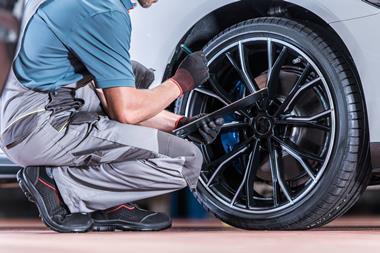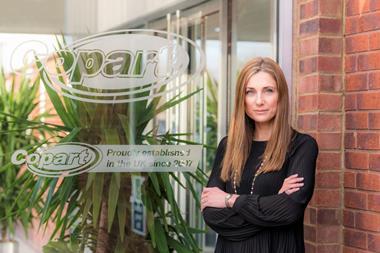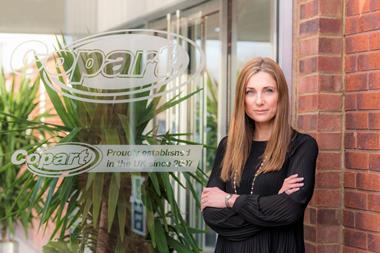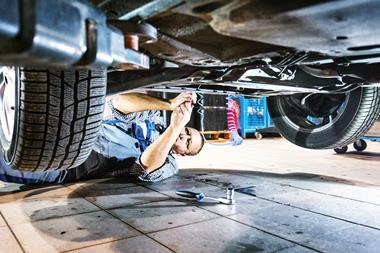The use of recycled car parts for repair may be in its infancy, but industry voices predict a boost in business to meet consumer demands
Today, everyone from campaigning teen Greta Thunberg to trade association Biba is rooting for all things sustainable, focusing on promoting business practices that are environmentally kind.
The cultural focus on recycling and being green has now turned its laser-like attention to the insurance sector – in particular, the use of recycled car parts to complete insurance-related repairs after road traffic accidents.
Jon Dye, Allianz Insurance chief executive, said: “The world is more and more concerned about the ability to reuse things rather than just chuck them away.”
He added that the attention surrounding green parts is driven by “the whole ESG [environment, social factors and governance] phenomenon”.
Consumer appetite
Independent research commissioned by Allianz in October found that 69% of UK motorists would be receptive to accepting a recycled car part; only 6% of the 250 respondents said a firm ‘no’ to the use of green parts altogether.
Furthermore, 52% said they expected vehicle repairers to offer the option of green parts.
More than three-quarters (77%) of respondents would be happy to use green parts for their car’s repair if it was better for the environment; 74% said they would use them if it was more cost effective, while 36% said they would be more inclined to use green parts if they were quicker to source than new parts.
Based on these findings, Allianz Insurance is trialling the use of green parts within its claims process – this includes using undamaged or reusable components from end-of-life accident damaged vehicles for car repairs.
Nick Rossiter, Allianz Insurance motor damage strategy manager, said: “Recycled parts are not a new concept, but there has been a clear societal shift and more people are receptive to choosing environmentally sustainable solutions.
“Other benefits to using green parts include reduced repair costs, which could help reduce the pressure on claims inflation and can prevent delays in the repair process when new parts are not immediately available.”
Despite this clear interest in using green parts, Copart UK’s managing director Jane Pocock believes consumers are more divided.
She said: “There’s some people who would be happy to have their vehicle repaired with green parts, and then there are other people who would rather have the car salvaged [scrapped] and get a new car because they’re worried about safety or it’s extensively damaged.
”There’s definitely a divide in views now.”
Safety concerns
But are ‘used’ car parts safe enough to fix accident damaged vehicles?
Pocock said green parts used to replace wings, doors or headlights, for example, are “really useful to promote recycling”. But using green parts to repair safety features, however, is a big no-no.
“We just need to be careful that it doesn’t stretch into parts that impact on safety or performance, because then you don’t necessarily have the provenance of that part when it’s being fitted to your car,” she said.
She added that there is “an element of responsibility that the insurers will be managing under their own terms and conditions”.
Rossiter, however, questioned the terminology used within the green parts market, blaming this for some safety misconceptions.
“Sometimes the term recycled parts has been used, which may have caused concern about how safe the parts are,” he said. “Second hand doesn’t mean second rate.”
He continued: “Green parts are subject to strict inspections and Allianz will not be using any parts that are safety critical. This clearly demonstrates that more education and information should be available to highlight the benefits green parts can bring.”
Feeding the European market
Although green or recycled car parts are being trialled in the UK, Pocock said such parts are already used in Europe because most European cars are left-hand drive versus the UK’s right-hand drive. As most collisions occur on the driver’s side, regardless of country, it is beneficial to trade car parts from the undamaged side.
Pocock said: “With us having right-hand drive cars, they’re often damaged on the right-hand side. Often we’ve got a car with a left-hand side with no damage, so they’re very popular in Europe to use as part of the repair. Doors and wings, headlights are often exported and used for that kind of repair.”
The availability challenge
For Pocock, however, the main challenge is availability.
This could mean, for example, having the right part available at the precise time of repair. This can prove problematic because green parts won’t necessarily come ready to use. “They won’t get the whole part, or it’ll still be bolted to other parts,” Pocock said.
“They’ve got some re-work to do before it’s useable in some cases, but there are a lot of dismantlers now specialising in this area and making it more user friendly.”
Pocock added that creating a nationwide green parts inventory could also be difficult due to the vast number of green part distributors, and that locating specific accident-prone parts could be tricky.
She said: “A lot of the cars that are damaged are front-end damaged cars, so if you’re looking to repair that, maybe green parts aren’t available.”
Total loss vehicle management firm e2e is taking steps to boost the availability of green car parts. It has used vehicles that suffered flood damage from Storms Ciara and Dennis. These written-off CAT B certified vehicles are predicted to contribute an additional 20% to the stock of reclaimed parts in the areas affected, the firm said.
E2e chief technical officer Giovanni Adamo, said: “Great care must be taken with flood damaged vehicles as the flood water could be contaminated and can collect in enclosed areas without being obvious.
“Naturally, electrical components cannot safely be relied upon after water exposure. But there are a number of parts, including wheels, tyres and panels made from plastic or composite components, which will not be damaged, such as bumpers, grilles, front panels and plastic wings. These parts are professionally dismantled and cleaned, rigorously tested for quality and the provenance of the partis recorded, including vehicle history and mileage, to indicate the work the component has previously done.”
Neil Joslin, e2e chief operating officer, added: “Recent delays in parts procurement, driven initially by Brexit and latterly by coronavirus, has led to e2e seeing insurance related demand for reclaimed parts steadily increase.
“The floods, meanwhile, have generated unprecedented levels of recovery instructions. We are in a unique position in the market with our network capability and capacity to recover flood damaged vehicles, dismantle them, clean, test and retrieve reclaimed parts and ultimately offer them back to the market for re-use, warranty assured and delivered within 24 hours of order.
“We are pleased to be able to effectively support the environment, insurers and their policyholders, simultaneously.”
Although more insurers are opting to trial green parts within accident-related repairs, Pocock said the market is still in its infancy.
“In terms of accident repairs for policyholders, that’s for the insurance company to regulate,” she added. “We’re looking at this with interest because it would appear to be a growing market.”














































No comments yet